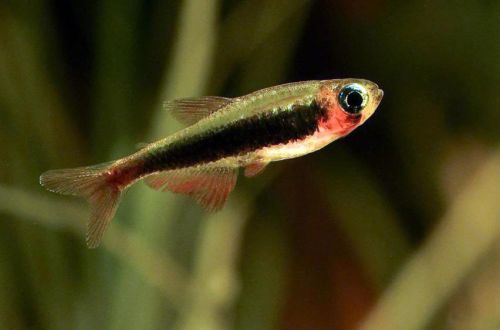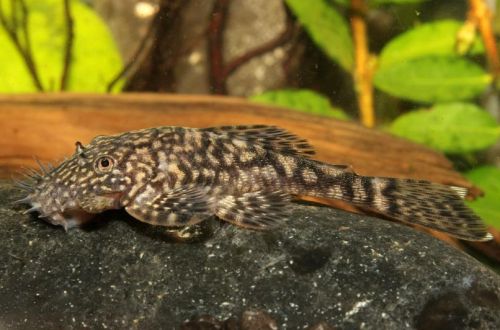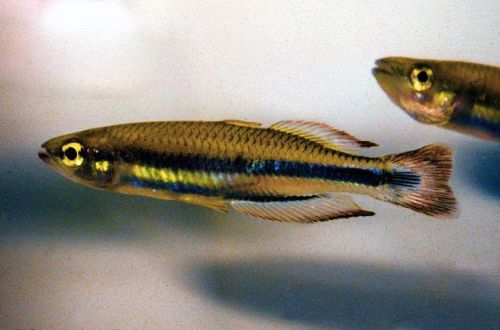
Tetra Tucano
Tukanoichtus Tukano or Tetra Tukano, scientific name Tucanoichthys tucano, belongs to the family Characidae (Characinidae). The fish is named after the Indian tribe Tukano, who lives in the jungle on the border of Colombia and Brazil. It was in this region that the first specimens of a new fish species were discovered.
They are relatively uncommon in amateur aquaristics, although they do not differ from other tetras in terms of the level of complexity of keeping.

Contents
Habitat
It comes from South America from the upper basin of the Rio Negro from the territory of western Brazil and eastern Colombia. Inhabits small streams and rivers flowing through tropical rainforest. A typical biotope is a stream about 2 meters wide, the bottom of which is littered with a thick layer of fallen leaves and branches, and there are no aquatic plants. Due to the abundance of plant organic matter, the water acquires a rich brown color.
Brief information:
- The volume of the aquarium – from 40 liters.
- Temperature – 20-28°C
- Value pH — 4.0–6.5
- Water hardness – 1–8 dGH
- Substrate type – sandy
- Lighting – subdued
- Brackish water – no
- Water movement is weak
- The size of the fish is about 2 cm.
- Feeding – any food of suitable size
- Temperament – peaceful
- Keeping in a group of 8-10 individuals
Description
Adults do not exceed 2 cm in length. The color is predominantly gray with a reddish belly and fins. A wide black stripe runs along the body from head to tail. Sexual dimorphism is weakly expressed, males and females are practically indistinguishable from each other.
Food
Accept a variety of foods of suitable size. The daily diet may consist of dry flakes, granules combined with live or frozen artemia, daphnia, bloodworm pieces, etc.
Maintenance and care, arrangement of the aquarium
The optimal size of the aquarium for a flock of 8-10 fish starts from 40 liters. The design is arbitrary, but Tetra Tucano will look most harmonious in an environment reminiscent of its natural habitat – among snags in low light conditions. The substrate is sandy. Aquatic plants are optional and are at the discretion of the aquarist.
An important element of decor are the leaves of some trees, which are placed at the bottom. By analogy with the processes occurring in nature, the leaves in the process of decomposition release tannins that give the water brown hues. In addition, some of the substances have antifungal and antimicrobial effects, which positively affects the health of the ecosystem.
Successful long-term keeping is possible in water with low carbonate hardness and acidic pH values. It is necessary to maintain a stable hydrochemical composition of water and prevent the accumulation of products of the nitrogen cycle to dangerous concentrations. Achieving the desired stability is ensured by the operation of the filtration system and other equipment and by carrying out regular aquarium maintenance procedures: replacing part of the water with fresh water, removing organic waste (food residue, excrement), etc.
Behavior and Compatibility
Tukanoichthus Tukano has a peaceful disposition, prefers to be in the community of relatives and other species comparable in size. It is advisable to maintain in a group of 8-10 individuals. During the spawning period, males become territorial, but due to their size they remain safe for tankmates. Any large and especially aggressive fish are excluded.
Breeding / breeding
The breeding strategy differs from that of other characins. Tetra Tukano is considered a caring parent. With the onset of the mating season, males form temporary territories around some hard surface, for example, a leaf or a piece of driftwood, a branch. When the females are ready, they accept the courtship of the males and lay several dozen eggs in his area, after which they swim away. Male individuals remain at the masonry and guard it until the fry appear.
Parental instincts weaken over time, and in order to protect offspring, it is recommended to move it to a separate tank. In the first days of life, juveniles differ from adults, having a bluish color.
Fish diseases
Diseases inherent in this particular species of fish were not noted. When kept in suitable conditions (high water quality, balanced diet, non-conflict neighbors, etc.), health problems are not observed. The most common cause of disease is the deterioration of conditions leading to immune suppression, which makes the fish susceptible to infections that are invariably present in the surrounding area. When the first signs of an illness are detected (lethargy, exhaustion, refusal of food, lowered fins, etc.), it is necessary to immediately check the main parameters of the water. Often, the restoration of acceptable living conditions contributes to self-healing, but if the fish is too weak or has received obvious damage, medical treatment will be required. For more information on symptoms and treatments, see the Aquarium Fish Diseases section.





